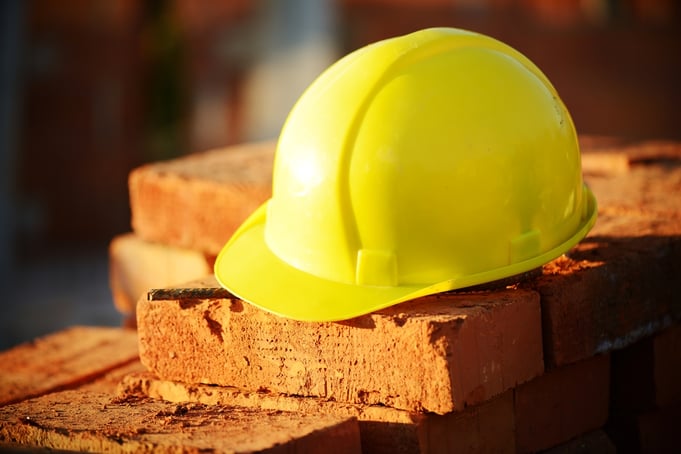
Clay bricks have featured as a construction product for thousands of years with evidence of their use dating as far back as the time of the Roman Empire. It is a material prevalent across the UK's built environment today and continues to be a fundamental ingredient in modern architecture.
Bricks are a versatile and sustainable building material, which when combined with good building-design, provide the following benefits:
- Highly durable
- Offer long-term performance
- Low maintenance
- High thermal mass
- Reusable & recyclable
- Provide healthy.
Bricks were made by hand until about 1885. Once the Industrial Revolution broke out, the brickmaking machinery was introduced. Consequently, the number of clays that could be made into brick was greatly increased which influenced the production capacity. Handmade brick production ranged up to 36,000 bricks per week but by 1925 a brickmaking machine made 12,000 bricks a day.
Brick making today is generally seen as one in a number of different production routes – hand made, extruded or moulded which can include softmud, waterstruck or dry pressed.
Hand-made bricks
The process of hand making bricks has changed little for centuries and still tends to use traditional tools and techniques. The clay is thrown into individual moulds by hand. To prevent the clay from sticking to the mould it is normally coated in sand, or sometimes water. Once the brick shape has been formed in the mould it is removed and individually stacked ready for drying.
Handmade bricks have a gentle creased texture on the face of the brick. This is a result of the way the clay is thrown into the brick moulds. Handmade bricks also tend to have a 'frog'. The frog is the indentation in the bed surface of the brick, usually on the top.
As each handmade brick is made individually they each have their own unique character with no two handmade bricks being exactly the same.
Extruded bricks
Extruded bricks, also known as wirecut bricks, are made using a more modern method of brick manufacturing. Relatively low moisture clay is extruded through a die to form a column. This column of clay is then cut with wires, thus the term wirecut, to split the clay into individual bricks. Extruded bricks, or wirecut bricks, tend to be more uniform in size and shape than softmud or handmade bricks. It is also possible to apply a wide range of different textures to these bricks during the manufacturing process such as sanded textures, roller textures, drag wired textures, rustication and even glazes. Another distinctive characteristic is that they tend to have perforations or core holes running through the bed of the bricks. These perforations come in many different patterns and are there to lighten the brick and aid the drying and firing process.
Moulded bricks – Softmud and waterstruck
In the production of softmud, or stock bricks, clay with a relatively high water content, typically 25-30%, is used. As with handmade bricks, to keep the clay from sticking the molds are lubricated with sand or water. Once the molds are filled the excess clay is struck from the top of the molds. If the molds have been lubricated with sand these bricks would be termed sand-struck, whereas if the molds had been lubricated with water the bricks would be termed water-struck.
Softmud, or stock bricks, will have a different texture depending on if they have been made using a sand-struck or water-struck process. It is also possible to create a creased texture on stock bricks similar to that achieved on genuine handmade bricks.
Softmud bricks also tend to have a frog. The frog is the indentation in the bed surface of the brick, usually on the top. Not all softmud bricks have a frog, some are solid. Solid softmud bricks tend to be made using the water-struck process.
Moulded bricks – dry pressed
The dry pressed method is usually suited to clays of low plasticity and is used to produce bricks with the traditional deep square frog. Clay is prepared using the dry pan method and fed directly into a press mould box. Here it is pressed into an initial brick shape, and re-pressed into the final shape and size.
In all of these processes the quality of the clays being used is probably the primary most important factor to achieve the best quality. However, sometimes these clays might not be readily available or they are too expensive to buy. Furthermore for moulded bricks using such high water content then drying times and profiles can have an effect of production throughput rates.
Many different additives have been looked at and used over the years of production but the one product that continues to give the best results is a clay conditioner.
- When mixing clays with water, the clay conditioner acts as a wetting agent. It reduces surface tension and promotes a more homogeneous mixing. With this better flow of particles, the structure of the clay mass is more even, reducing distortions or cracking after drying.
- In shaping, the additive promotes better flow of the mix particles when a force is applied, and it reduces friction between the clay mix and the applied force (press, extruder, etc.). This lower friction promotes a reduction of added water, electrical energy inputs, heat generation and external lubrication. The consequence is higher output rates and extended working life of wearing parts.
- Reduced water means less heat input for drying and/or faster drying cycles. Immediately water starts leaving the clay article the clay conditioner begins to promote increased bond strength resulting in a faster rate of strength gain. With this faster rate, the clay articles become more resistant to handling stresses sooner, thereby reducing losses during wet transportation.
- In drying, the additive increases the breaking strength of the clay and through the formation of a surface layer hardens the edges and other vulnerable points. This increased strength will also reduce handling losses between setting and de-hacking and reduce re-absorption of water from the atmosphere.





